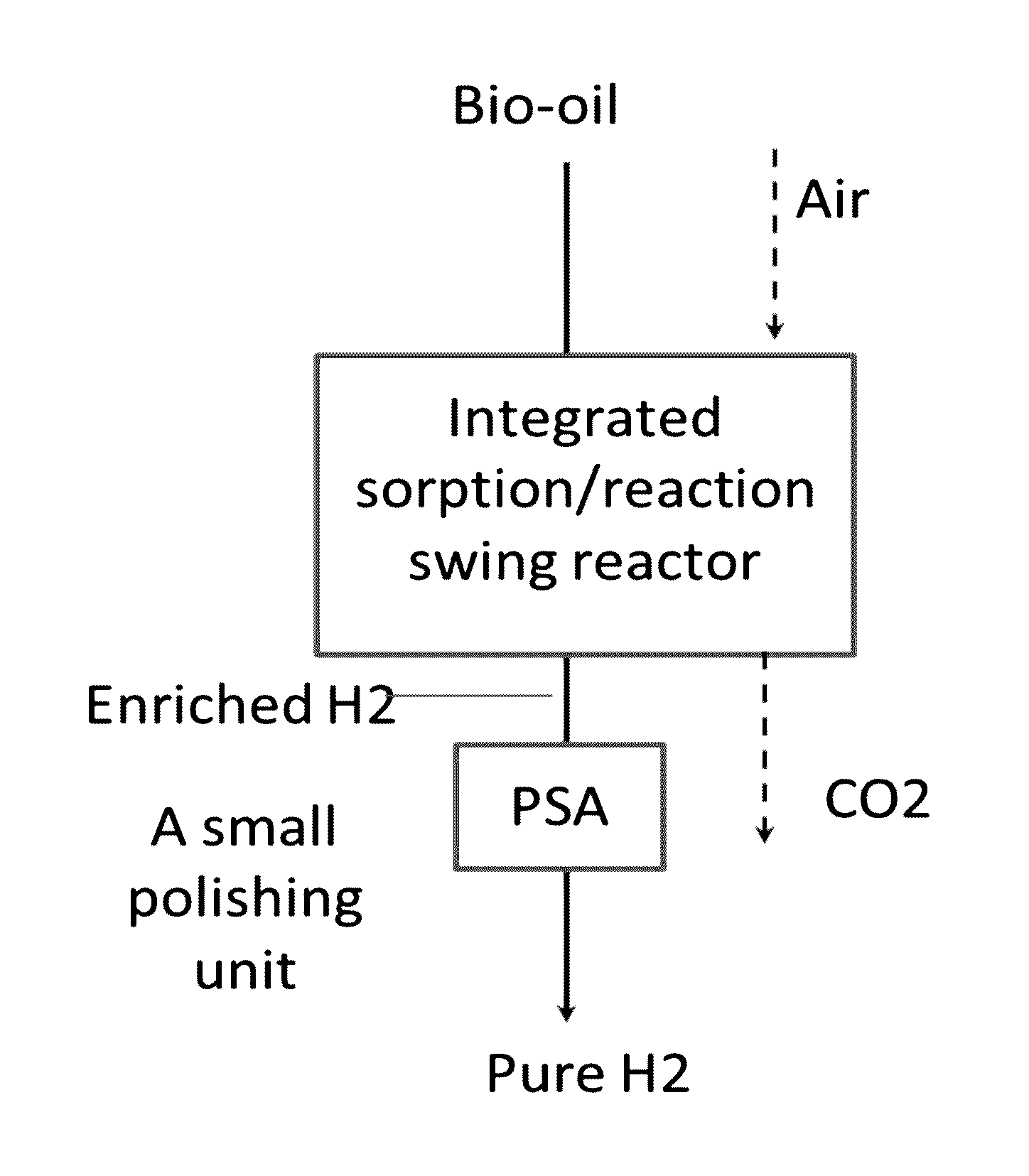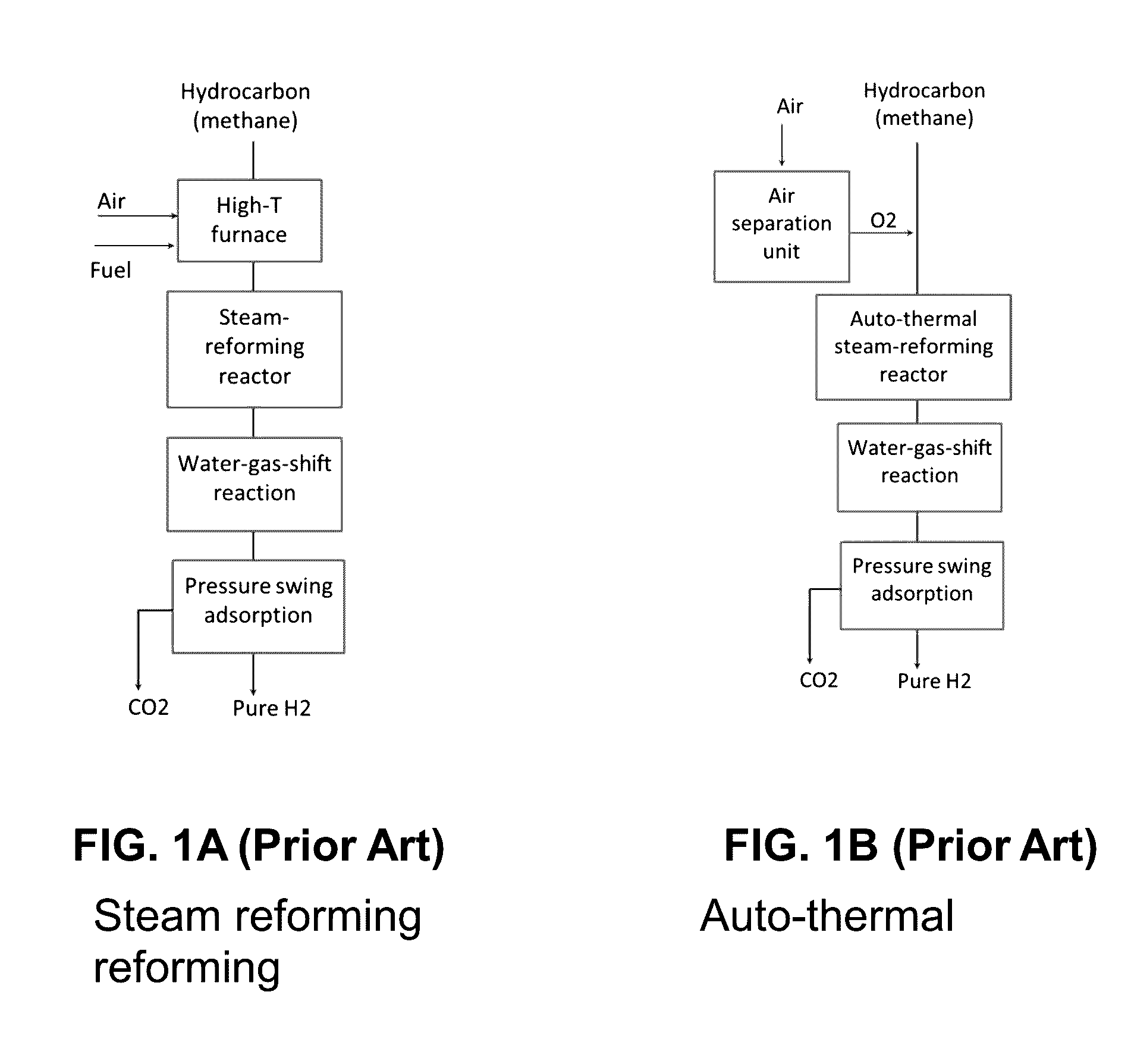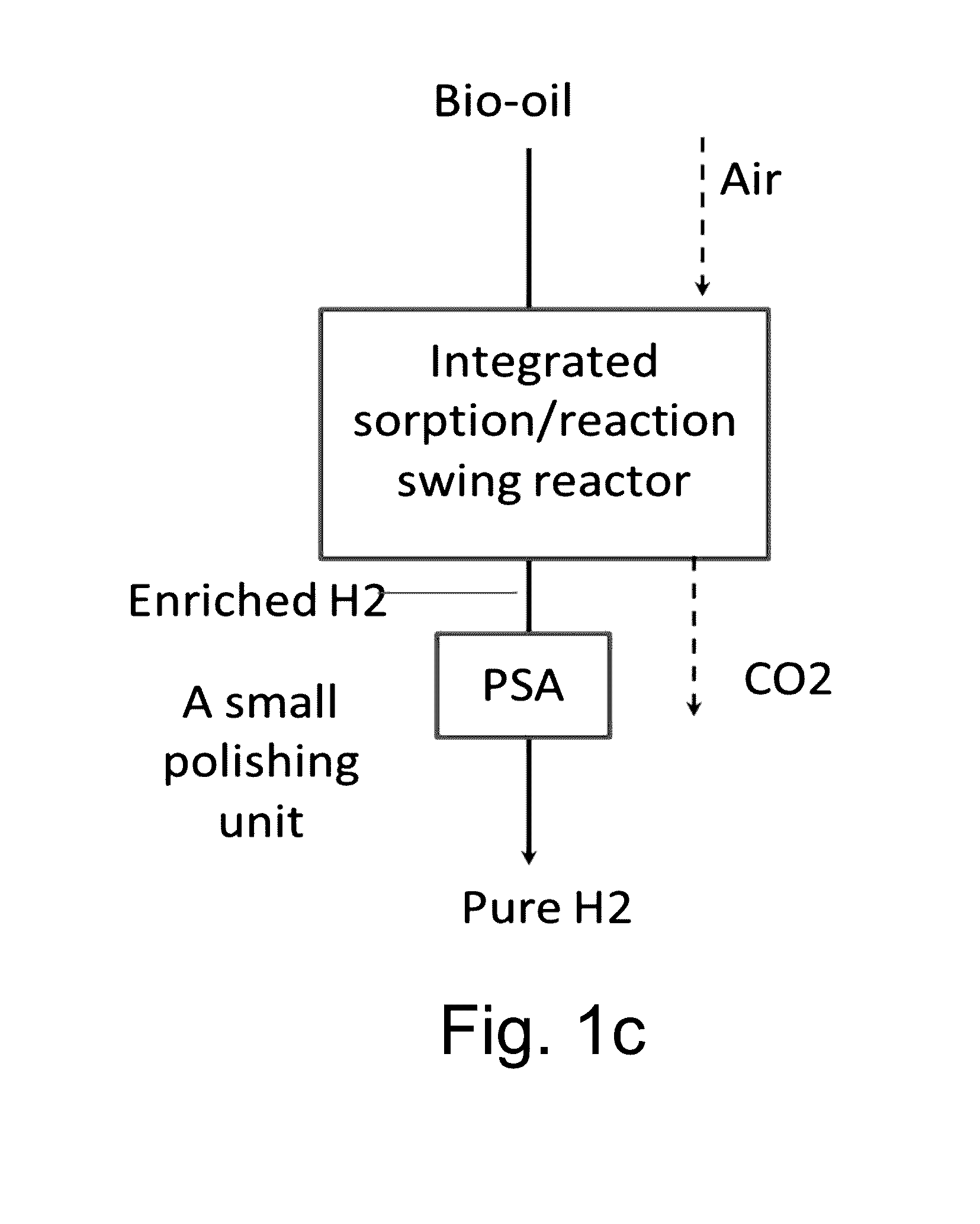Reactor, CO2 sorbent system, and process of making H2 with simultaneous CO2 sorption
a co2 sorption and h2 technology, applied in the field of co2 sorbent system and process of making h2, can solve the problems of inability to build a large-scale h2 gas plant for distributed and/or on-demand power generation, inability to achieve the effect of reducing the size of the gas purification unit, reducing the psa, and reducing the reaction ra
- Summary
- Abstract
- Description
- Claims
- Application Information
AI Technical Summary
Benefits of technology
Problems solved by technology
Method used
Image
Examples
example i
CO2 Sorbent Preparation
[0113]The dolomite-based composite sorbent was prepared in the following way. The Li2CO3—Na2CO3—K2CO3 eutectics (LiNaKCO3) has a melting point about 397° C. It was prepared by mixing 32.2 wt. % Li2CO3 (99%, Sigma Aldrich), 33.3 wt. % Na2CO3 (99%, Sigma Aldrich) and 34.5 wt. % K2CO3 (99%, Sigma Aldrich). The powder mixture was ground together and then heated to 410° C. for 1 hr. The resulting eutectic was crushed and ground to a fine powder. Dolomite from City Chemical was used as received of after calcination at 850° C. for 4 hours in air. The dolomite was mixed with LiNaK—CO3 at desired weight ratio by ball milling. The solid mixture was added into a Nalgene plastic bottle and mixed with 2-propanol (EMD Chemicals, Canada) and zirconia beads (diameter: 0.3-1.0 cm). The bottle was rotated at a speed of 150-200 rpm for 48-72 hours. The resulting slurry was dried at room temperature (RT) to allow evaporation of 2-propanol. Following drying, the cake was calcined ...
example ii
CO2 Sorption Performances by TGA Tests
[0116]Performance characteristics of sorbents for CO2 capture under steam-reforming conditions were tested on a thermo gravimetric analyzer (TGA, Netzsch Thermal Analysis, STA 409 cell) at ambient pressure. The sample weight for each test was approximately 20 mg. CO2 absorption was evaluated by heating sample in 10-100% CO2 to 500-600° C. Cyclic CO2 absorption and desorption were evaluated by exposing the sample to the CO2 gas for 50 minutes at 550° C. and then, raising the temperature in N2 flow and holding at 700° C. for 60 minutes. The gas flow rates for the sorption and regeneration processes were maintained at 70 ml / min and 90 ml / min, respectively. The heat of absorption was measured along with the TG tests through differential scanning calorimetry (DSC). The TGA tests help to identify CO2 sorption and regeneration temperatures, measure CO2 sorption capacity, and assess sorption and regeneration kinetics.
[0117]For comparison, performances o...
example iii
Packed Bed CO2 Sorption / Regeneration Tests of Composite Sorbents
[0126]A packed bed sorption test was conducted on a tube tubular reactor (316 stainless steel, 0.5″ OD, 0.049″ wall thickness). The sorbent particles of 40-100 mesh were loaded into the reactor tube by tapping the reactor wall. The resulting packing density was about 0.6 g / cc. The sorbent bed was held by quartz wool on the top and bottom. The gas flow was directed downward through the sorbent bed. Individual gas flow rates were controlled by mass flow controllers (MKS Instruments model 1179A and 1479A), while water flow rate was controlled by HPLC pump (Cole Parmer model DigiSense 89000). The bed temperature was controlled by the furnace heating. The sorbent bed was heated to 700° C. in 0.5 liter / min air to activate prior to lowering to designated sorption temperatures. The water was preheated to vaporize at 150° C. prior to entering the reactor. The reactor effluent was cooled down to 4° C. to condense the majority of ...
PUM
| Property | Measurement | Unit |
|---|---|---|
| diameter | aaaaa | aaaaa |
| diameter | aaaaa | aaaaa |
| volume average pore size | aaaaa | aaaaa |
Abstract
Description
Claims
Application Information
 Login to View More
Login to View More - R&D
- Intellectual Property
- Life Sciences
- Materials
- Tech Scout
- Unparalleled Data Quality
- Higher Quality Content
- 60% Fewer Hallucinations
Browse by: Latest US Patents, China's latest patents, Technical Efficacy Thesaurus, Application Domain, Technology Topic, Popular Technical Reports.
© 2025 PatSnap. All rights reserved.Legal|Privacy policy|Modern Slavery Act Transparency Statement|Sitemap|About US| Contact US: help@patsnap.com



